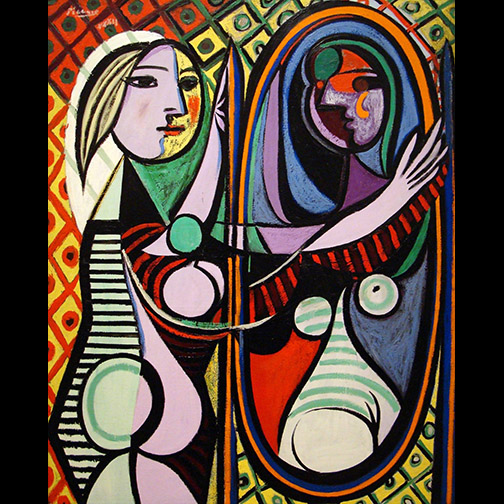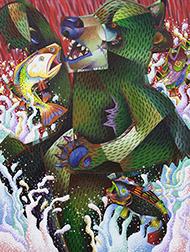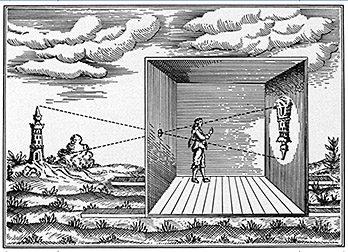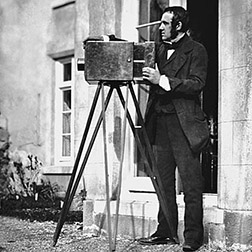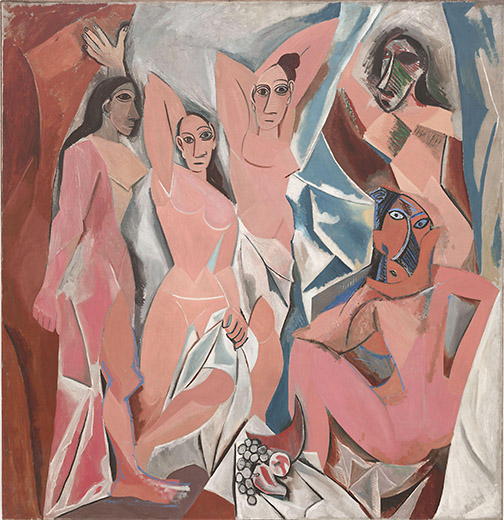
The purpose of this second installment in my discussion of Picasso is to explain WHAT it is about his work that makes it so important and , yes, why it IS art, in fact, likely the most important contribution to art in the 20th Century.
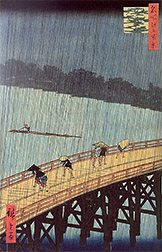
In my last post, Picasso Haters!, I mapped out the representational art environment/history that led up to Picasso’s appearance on stage. You can catch up by visiting that post HERE.
So, one last huge development that changed Western painting, before Picasso makes his appearance. Japan ended it isolationist policy in the middle of the 19th Century and began exporting to the outside world. Japanese Prints were so plentiful in Europe, that you could even find them wrapped around exported pottery, to protect the objects from breakage. Contemporary artists at the time, among them,

VanGogh, Gauguin, Degas and Lautrec saw this stunning artwork for the first time, with its strong use of outline, flat color and its lack of shadows. The effect caused a seachange and Post Impressionism was born.
This is the world Pablo Picasso entered in 1900, when he arrived in Paris. His first efforts were highly influenced by the work of the Post Impressionists, but he still managed to contribute something brand new here: monochromatic painting. Before Picasso’s Blue and Rose Periods no artist had thought to limit their palettes to a single hue.
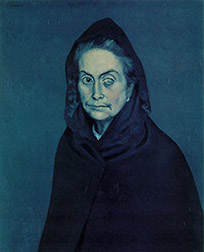
But an even bigger invention was presented around 1910. Inspired by the later works of Paul Cézanne, Picasso and Georges Braque blew apart painting and reassembled it. Frustrated by the fact that, unlike sculpture, painting had been limited to describing subject matter from a single point of view, Braque and Picasso sought a more honest way to represent a 3 dimensional world on a 2 dimensional surface. The result was the multiple view point perspective approach, Cubism (Analytical Cubism) to be more precise.
To better understand Picasso, it’s important that
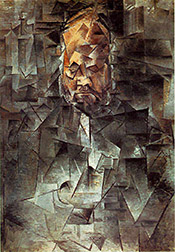
you understand how Fine Art changed direction here. With cubism, fine art was no longer just about a beautiful esthetic, as it had been up to this point in history. Cubism raised concept to the top of the list, above beauty. So now we have art divided into 3 general categories: commercial art (illustration), gallery art (a search for a beautiful esthetic) and museum or fine art (intellectual pursuits). Picasso was the king of conceptual art and would remain so his entire life.
Others before him, had already separated painting from its marriage to the realistic representational image, Picasso realized he was now presented with the ball and given the opportunity to run with it as far as he could.
He broke painting into 6 graphic means, means for arriving at an end: line, form, value, color, texture and pattern. This enabled him to think of them as independent entities, to be used all alone, if desired, as well as used together in combination. This led to uncovering various systems of abstraction (ways to abstract): reductive abstraction, geometric abstraction, organic abstraction and the use of multiple viewpoint perspective in abstraction.

Through his exploration, in addition to cubism and monochromatic painting, he invented collage, assemblage and found object construction. Before he was done, he’d produced 200,000 pieces of art and covered every form of abstraction that could be created from subject matter. Since Picasso, any time an artist, abstracting from subject matter, believes they’re on a new course,
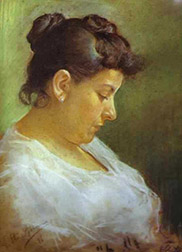
they round a corner and run right, smack into Picasso. In fear of taking on Picasso, after world World War II, painters in New York avoided subject matter altogether and Abstract Expressionism was the result. Even here you could make the argument that Abstract Expressionism was heavily influenced by some of Picasso’s brushwork.
Many believe Picasso did what he did, because he lacked traditional skills. They’d be wrong. Picasso could draw and paint like an angel and did consistently, alongside his abstractions, throughout his career.

So when you stand before a Picasso, realize what you’re looking at is an intellectual pursuit, that values concept over pleasing esthetic, created by a genius who invented many of the forms of art in use today, that this artist almost single handedly brought us Modern Art, taking art from the Post Impressionist to the Abstract Expressionists. It’s not important that it be pretty, just that it’s brilliant!

